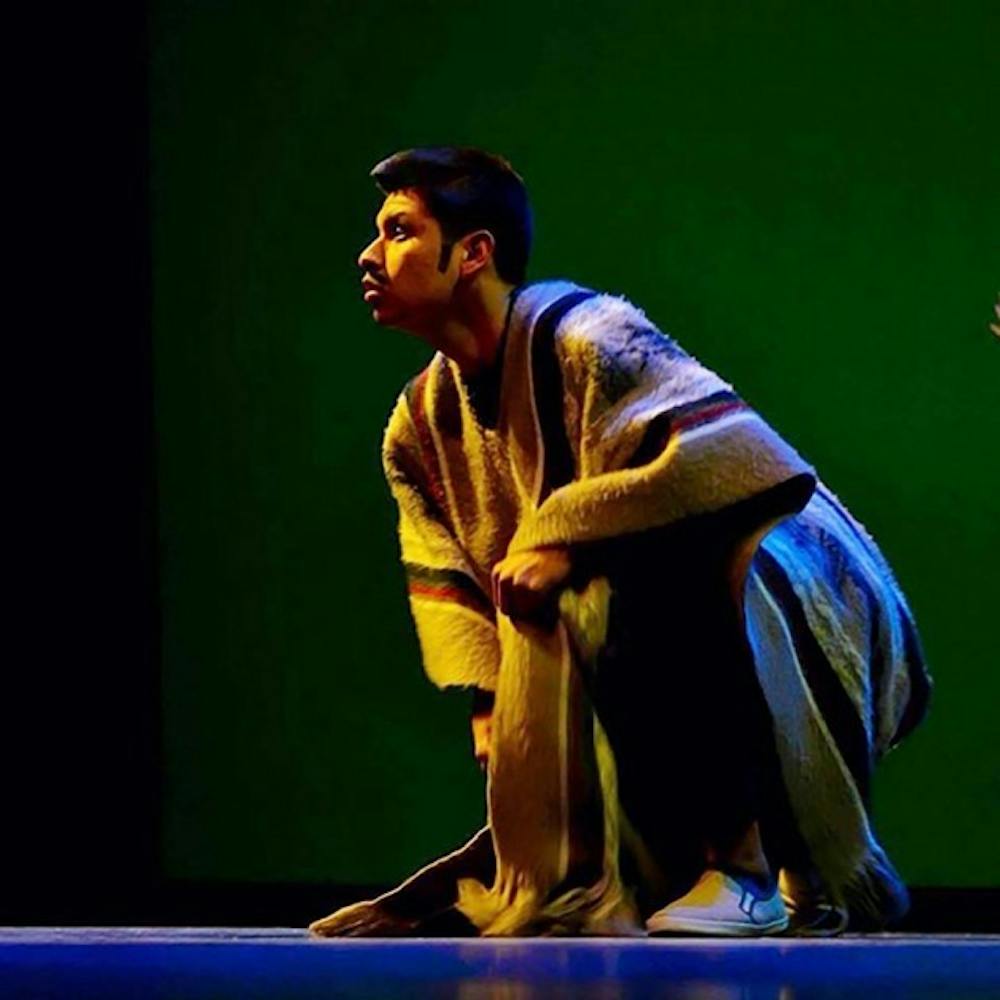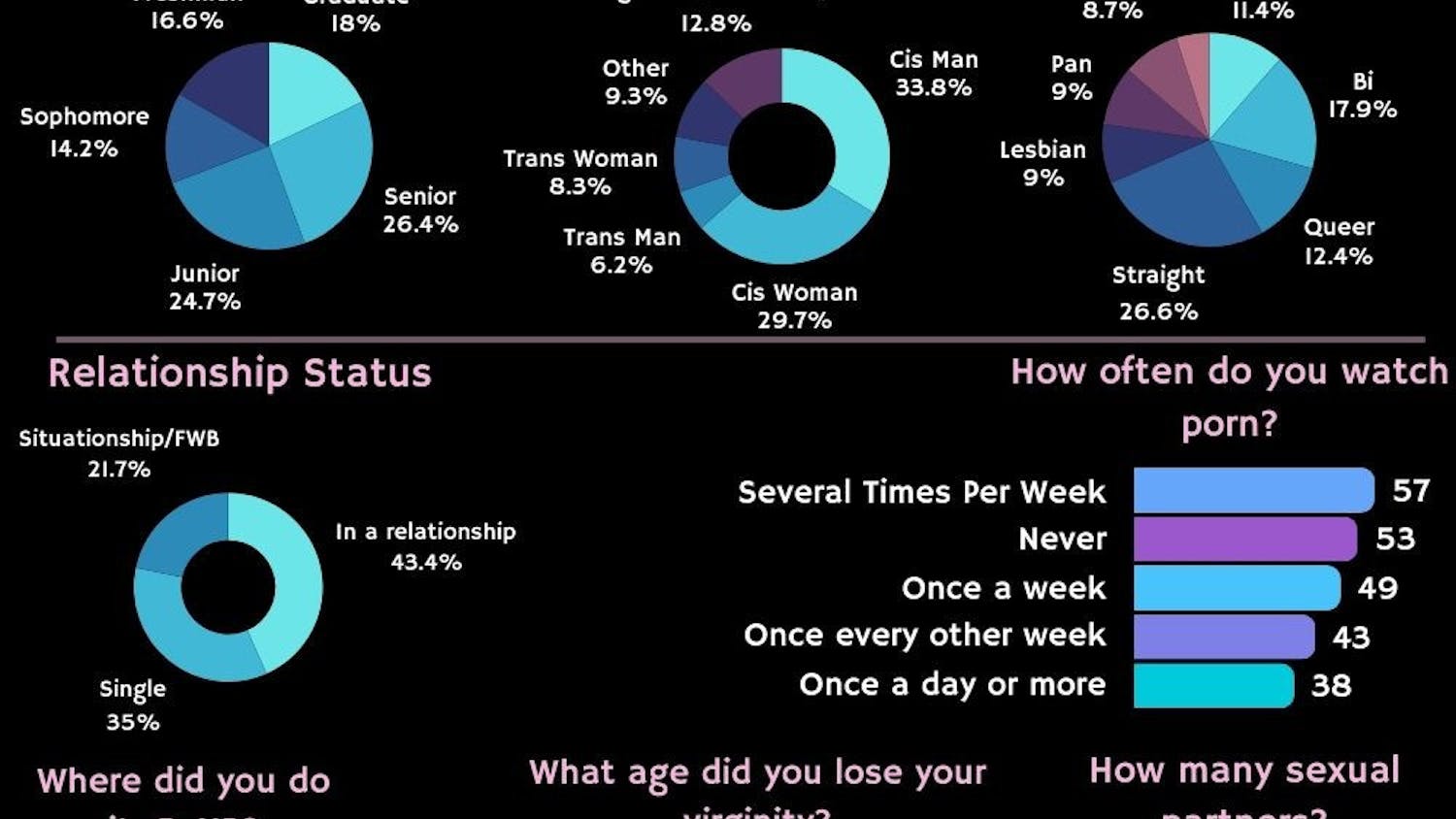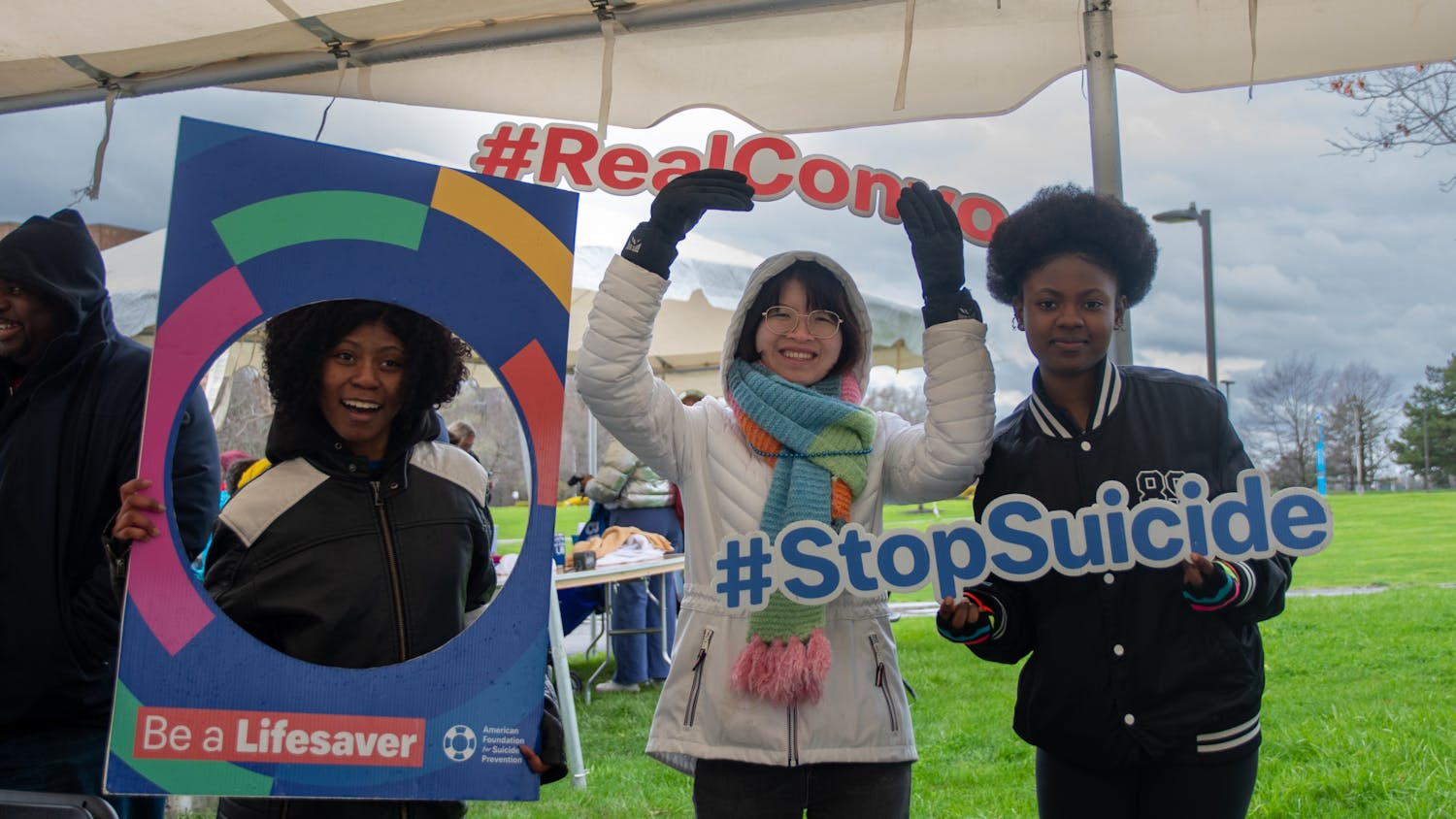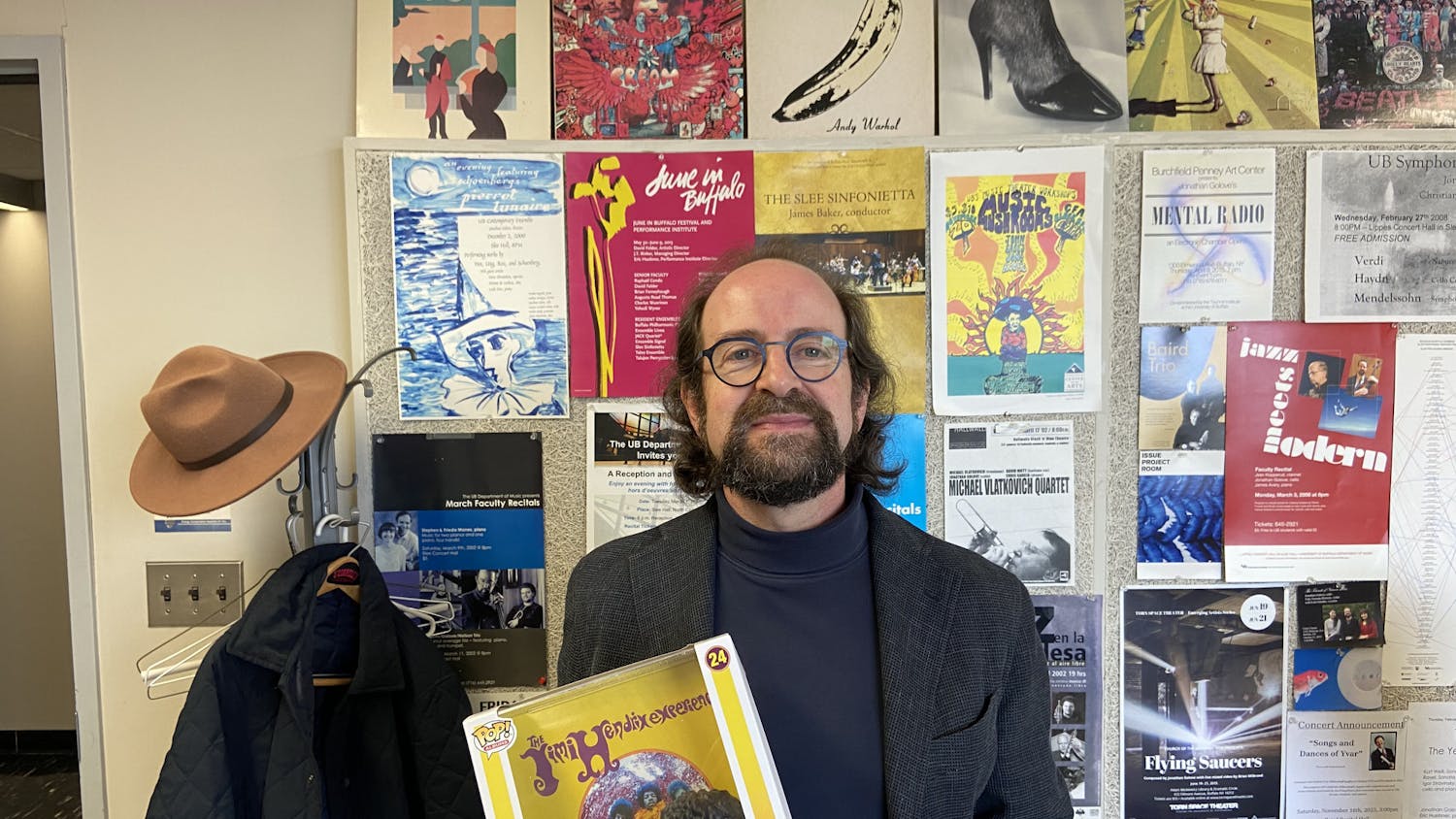The day after Xavier Perez’s grandfather died, his mom spread flowers, known as “flor de muertos,” on a table in their home. Until then, Perez never saw a reason to celebrate the dead.
Mexican students at UB are finding ways to celebrate El Día de los Muertos, or Day of the Dead. During this three-day long holiday, which takes place from Oct. 31 to Nov. 2, Mexicans give offerings known as “ofrendas” in their homes and at cemeteries to deceased family members such as traditional fruit, candles and chocolate beverages. The holiday was first observed more than 2,500 years ago in Mexico. Mexico is comprised of 31 states and each one puts a different spin on El Día de los Muertos.
Hispanics make up about 10.53 percent of Buffalo’s population, and 5.03 percent of them considered themselves as Mexican, according to data collected by the Census Bureau in 2010. Hispanics make up 5.2 percent of UB’s population, according to SUNY’s website.
“In the past, my family did not really celebrate El Día de los Muertos because we did not really have anyone to remember,” said Perez, a sophomore Spanish major from Mexico. “But when my grandfather passed away, all of that changed.”
Perez used to ask his grandmother why their family didn’t celebrate Halloween instead. His grandmother responded by telling him a popular Mexican urban legend that acted as fodder for his curious mind.
She said there once was a little girl whose mother passed away. The father grew so depressed that he neglected his daughter. One night, the father had a dream he saw all the people who died in his state, including his wife, coming back to Earth. The dream changed him forever.
After hearing this tale from his grandmother, Perez finally learned the meaning of El Día de Los Muertos.
Though El Día de los Muertos falls around the same time as Halloween, the two holidays are actually quite different.
“What I know about Halloween is that you dress up to get candy or to socialize and it’s more geared towards children and occasionally adults who go to parties,” Perez said. “El Día de los Muertos is more for adults because they have experienced the loss of loved ones.”
Perez sometimes struggles to celebrate the holiday at UB because he lives in a dorm.
“I still put the image of my grandfather on a table surrounded by candles and some sweets,” Perez said. “My space is very limited but as long as I am honoring my grandfather I am happy.”
Another limitation of celebrating El Día de los Muertos in Buffalo is the hassle of finding the native flowers and fruits used in Mexico, Perez said. He is able to find imported versions of fruits but he said it’s not the “same as the real thing.”
During El Día de Los Muertos, Mexican families surround the portrait of the deceased with items they may have liked. For example, it is popular to put tequila on the ofrenda.
Food is an essential component of El Día de los Muertos. Mexicans begin to prepare their dishes early in October. Pan de muerto (“bread of the dead”), jicama, a fruit native to Mexico and tangerines are popular foods consumed during El Día de los Muertos.
Mexican families also serve chocolate beverages known as Champurrado.
“The chocolate is made manually from scratch with a wooden stick-like tool,” Perez said. “The chocolate is then mixed with water and then shaken and stirred until the texture is perfect and plasma-like.”
Depending on the town, the beverage could be sweet and savory or hot and spicy.
Mexico’s economic strife makes many poor Mexicans worry they will not be able to afford to offer their loved ones any offerings, according to Perez.
El Día de los Muertos has helped Perez to learn more about his grandfather.
“I went to the attic with my grandmother and she asked me if I wanted to settle the table for my grandfather,” Perez said. “I went with her and she took out a box and I got to see the toys my grandfather had when he was little and they were very different from the ones we have now.”
Kevin Carpio, a junior Aerospace Engineering major, believes Halloween is more commercialized than El Día de Los Muertos because Halloween has lost its actual meaning, unlike the Mexican holiday.
“Rather than going house by house asking for treats and dressing up with costumes, Día de los Muertos is a day where we remember our lost family and celebrate with them with food and dancing,” Carpio said.
While Mexican students like Perez, who lived in Mexico for eight and a half years, actively celebrate the holiday, some Mexican students feel more or less apathetic when El Día de los Muertos approaches.
Arnold Rodriguez, a sophomore music major, doesn’t know too much about the holiday.
“My mom doesn’t really embrace Mexican culture so I’ve never really celebrated it,” Rodriguez said.
He said the lack of unity within his extended family members might be a reason that they never really celebrated the holiday. Although he hasn’t really celebrated it in the past, in the wake of his grandmother’s recent death, Rodriguez said he just might honor her memory this year by setting up an ofrenda in his dorm room.
Despite the fact the Mexican population in Buffalo is quite small, organizations still exist to bring the community together. In 1947, Centro Social Club Mexicano was established in the city of Lackawanna, just South of Buffalo. The community sponsors social events celebrated on Mexican holidays.
The Day of the Dead Party hosted by Beyond Ghosts is one of the few El Día de Los Muertos celebrations in Buffalo. The party is loosely based on the holiday and is held on Genesee Street on Nov. 1.
“While Halloween celebrates monsters, darkness and horror, our party celebrates the vibrant nature of life after death,” said Chrissy Lis, the event manager for the Day of the Dead party.
Although there’s an increased interest in the part of Latin and Mexican Americans to celebrate the holiday, the event manages to bring a diverse crowd of people, according to Lis.
“I feel like [UB doesn’t] celebrate [El Día de Los Muertos] because there’s not a large amount of Mexicans in our school so there’s not as big of a demand for the holiday to be celebrated,” Perez said.
Mexican students at UB are hosting events in an effort to honor El Día de Los Muertos. Caprio said the Latin American Student Association will help host a Día de los Muertos event with food and games at the Richmond Locked Lounge from 9 p.m. to 11 p.m. on Oct. 30.
email: features@ubspectrum.com





